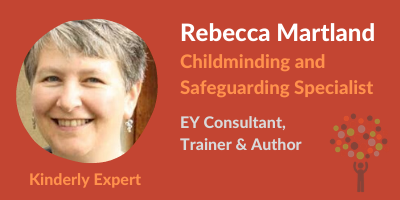In part one of this blog, I examined some of the reasons why early years childcare settings may currently be struggling to fill their spaces as we move out of lockdown. In part two, I’m going to explore some more ways in which providers can overcome issues and barriers in order to ensure sustainability.
Many families have been hit hard financially during lockdown, so consider if you can put a flexible charging system in place. Things that may help include:
Consider how you might approach charging if a child, group of children or whole setting has to isolate. As a childminder, what if you have to close due to you or your family having symptoms or testing positive? Should you charge full fees, a retainer or no fee at all? This is not an easy decision to make and you will have to balance the needs of your business against those of your families, whilst also trying to maintain the parents’ goodwill.
Some parents may want to return on reduced hours, perhaps due to financial constraints or perhaps to ease the child back in. Whilst not ideal from a business or logistical point of view, if the new hours can be accommodated then settings should try to do so in order to retain their custom. As the parent’s anxieties are calmed, the child settles, working hours increase or finances improve the parent may then wish to increase the child’s hours, to the setting’s advantage.
There are no clear grounds within government guidance for imposing a ‘one-setting only’ rule. The Department for Education have advised that children should attend ‘just one setting where possible’, rather than ‘only one’ with the onus on this decision being made on the parents, determined by their needs, not the setting.
Updated guidance, published 2 July, reaffirms that it is down to parental choice rather than setting policy, stating ‘Parents and carers should be encouraged to limit the number of settings their child attends, ideally ensuring their child only attends the same setting consistently’. Whilst ‘one setting’ does reduce the number of contacts a child makes and so is the sensible option wherever possible, it also causes major difficulties for families who often have to juggle multiple settings to provide sufficient care to enable them to meet their working obligations. It is also potentially unfair practice, creating monopolies and encouraging ‘poaching’.
From 20 July the requirement for keeping children in small, consistent groups (bubbles) is being removed, making the restriction being imposed by settings even less justifiable. Providers need to trust their parents to make the right choices for their families. They should discuss the options and risks with parents rather than imposing a unilateral ban If attendance at more than one setting is essential in order to meet the child’s needs it should not be prevented by setting policy.

As well as retaining existing families, settings also need to consider how they can recruit new business. You need to think about WHY a family should choose you and your setting and how you can spread your message so that it reaches parents looking for childcare. To help with this, consider:
If you’re not already doing so, think about all the available platforms you could use to let people know about your setting. These include:
Have a strong SM presence. Regularly share updates about what is happening in the setting on your pages and accounts (avoid children’s faces for safeguarding reasons) and share these posts in other groups where parents ‘gather’, if permitted.
Are there additional services that you don’t currently provide; provide for free; or have been providing as an ‘extra’ whilst closed that you could now offer and potentially charge for? These could be marketed at families who have not yet returned or are considering joining the setting. For example:

Although you cannot currently show prospective parents around your setting in the traditional way, there are plenty of ways you can show off your setting to new parents, such as:
Consider data protection and safeguarding issues around using photos and videos. This is particularly important for childminders who may be exposing their home and valuables publicly. Bear in mind too that lockdown measures are changing all the time so be prepared for when you are able to welcome parents back in person.

As part of the ‘show round’, discuss with parents how you will help their child to settle in.

I hope this blog has helped to provide some reassurance and ideas to support you on how to move forward. Clear communication and partnership with parents are powerful tools in both retaining loyalty and creating new relationships. With these at the forefront of your marketing and advertising strategies you will have a strong base to build on for the future.
References
DfE (July 2020) Actions for early years and childcare providers during the coronavirus (COVID-19) outbreak

About Rebecca
Rebecca has 20 years’ experience in the early years sector: as a childminder, she has received an Outstanding grade from Ofsted for four consecutive inspections. She is an Early Years consultant, trainer, author and Nursery World Awards judge. She is also a qualified teacher and Early Years Professional.